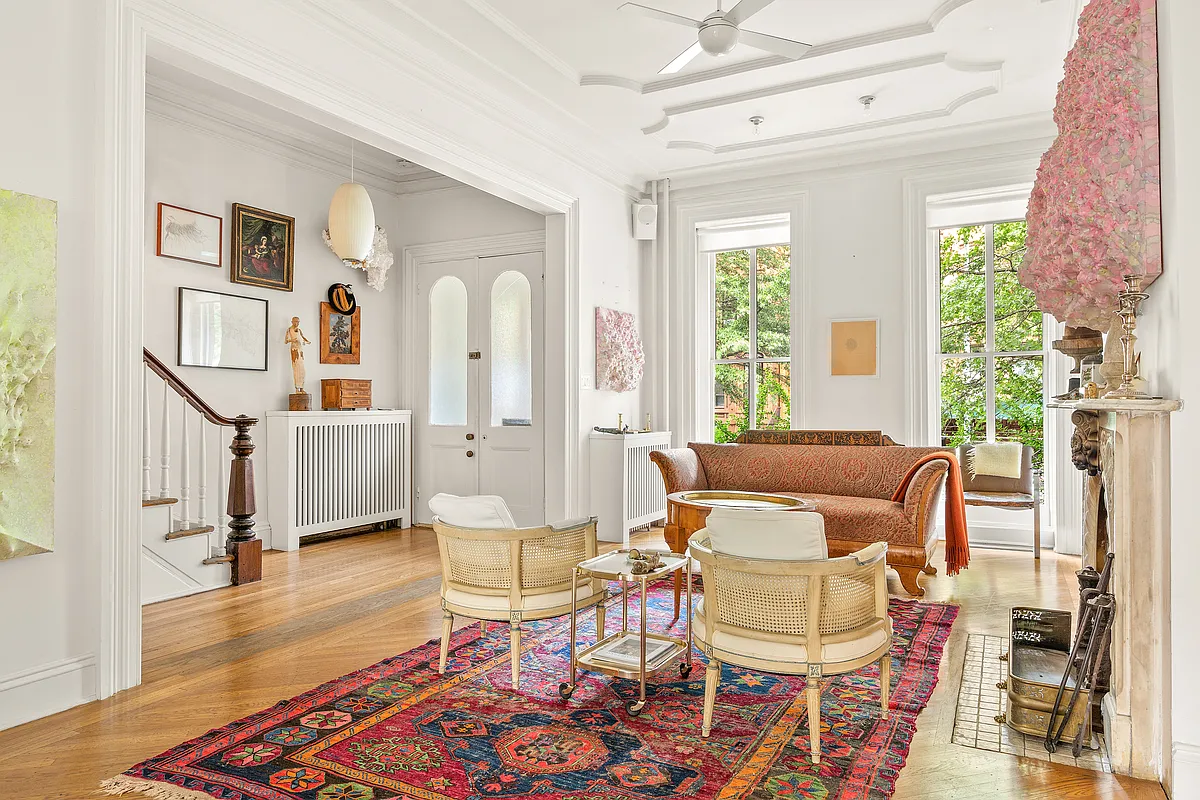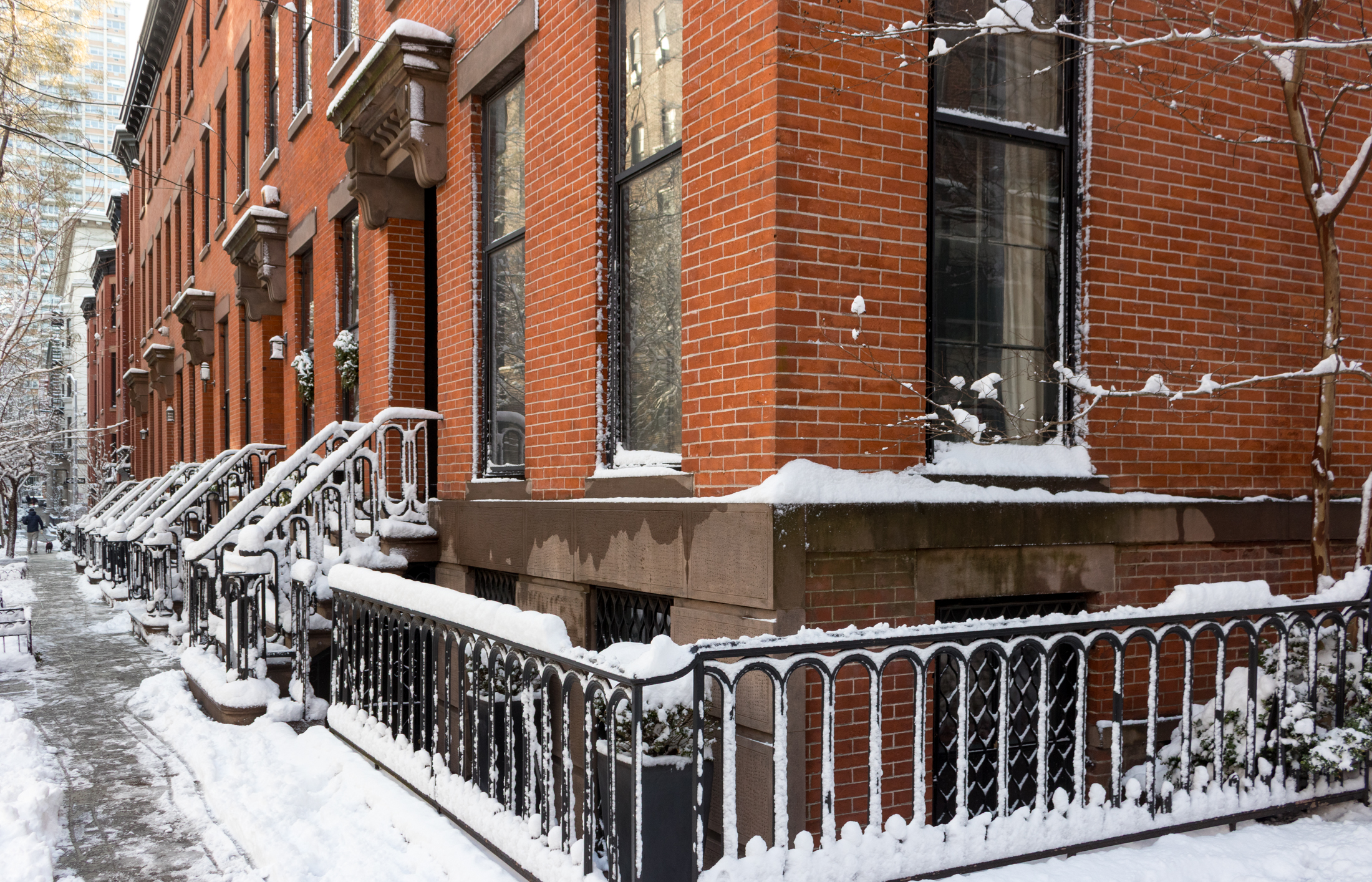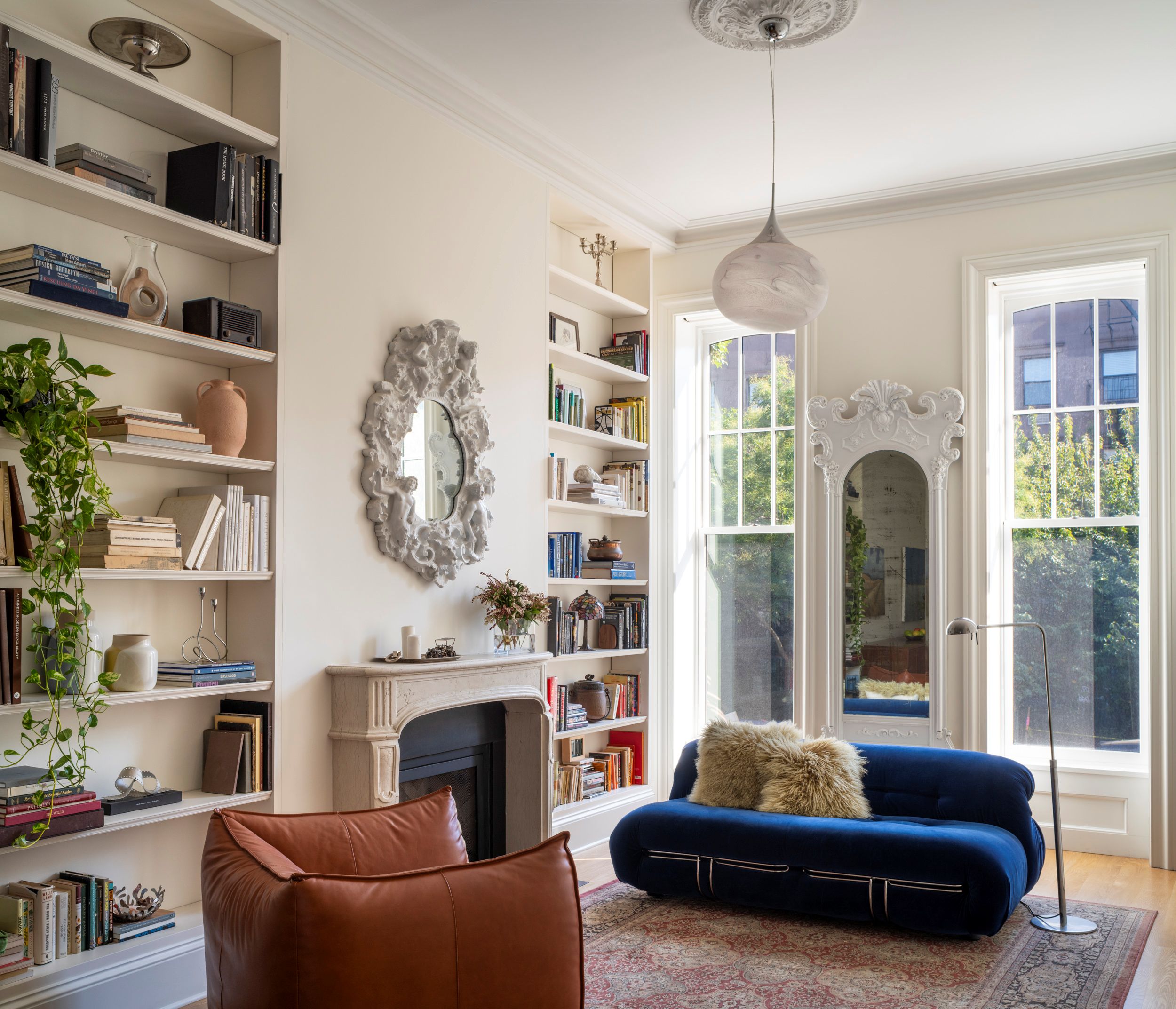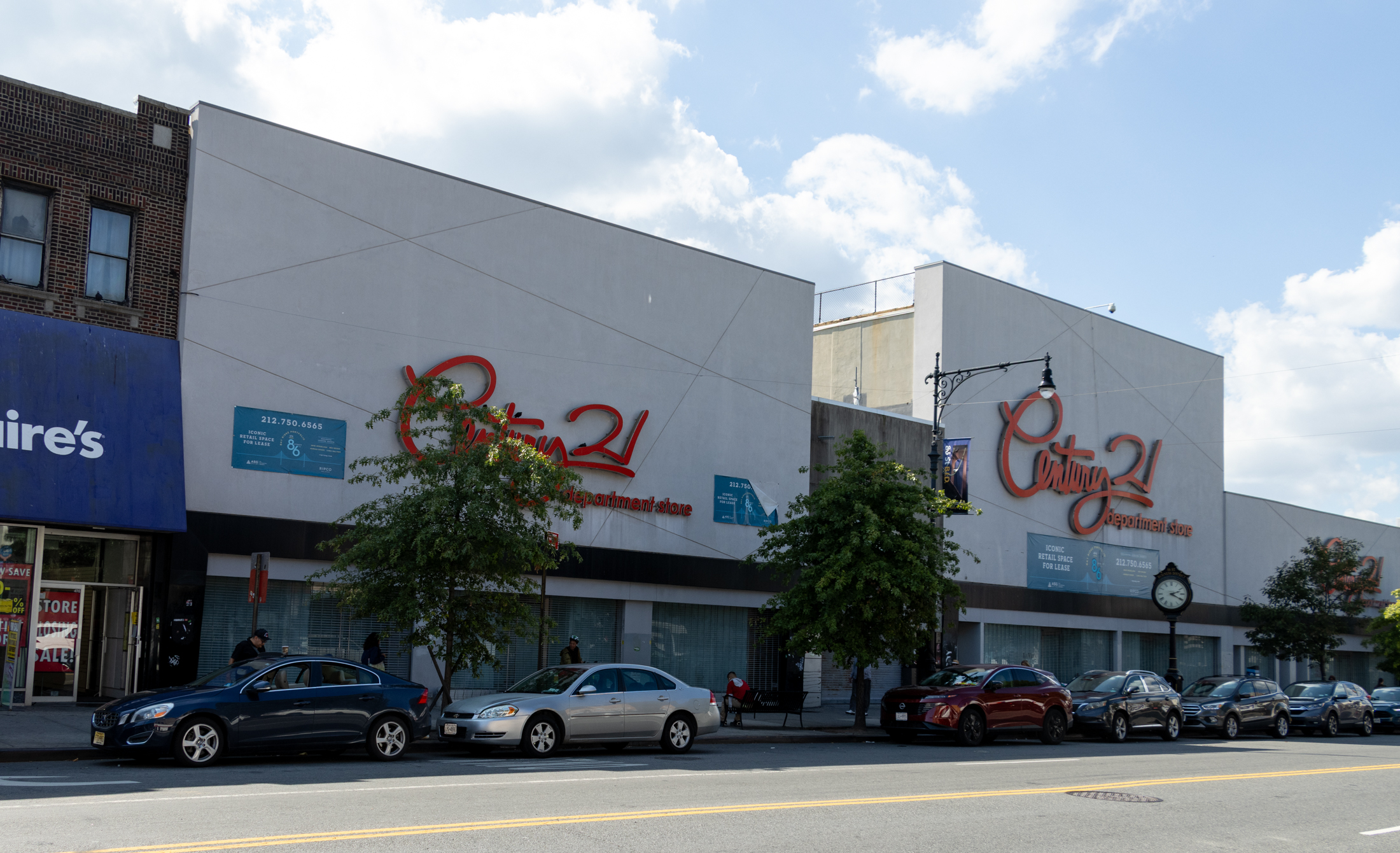Walkabout: The Temples of Bed Stuy and Crown Hts North
It is interesting to note how neighborhoods change. Shifting populations, economics and the changes of social structure often necessitate a change in a building’s use. Banks become stores or restaurants, office buildings and warehouses become apartments, churches become social centers and theatre spaces, while theatres become churches. This goes on everywhere, and is generally not…


It is interesting to note how neighborhoods change. Shifting populations, economics and the changes of social structure often necessitate a change in a building’s use. Banks become stores or restaurants, office buildings and warehouses become apartments, churches become social centers and theatre spaces, while theatres become churches.
This goes on everywhere, and is generally not a bad thing. Adaptive use can show creativity, and sometimes the new use for the building is even better than its original purpose.
Sacred spaces also play musical chairs. It is not uncommon to research a hundred year old church and find out it belonged to several different denominations over the years. This is also true with many of the synagogues with grace the streets of central Brooklyn, specifically Bedford Stuyvesant and Crown Heights North.

When the communities of Bedford, Stuyvesant Heights, St. Marks, and Crow Hill were developing, among the general population of well to do people was a sizable Jewish community. Mostly of German extraction, this community was made up of successful merchants, businessmen and professional people.
The houses of worship in the area were often large, impressive structures. They are filled with beautiful interior details, including massive stained glass windows, rich woodwork, and elaborate lighting.

Over the last seventy-five years, as the Reform and Conservative Jewish populations moved away, many of these synagogues were purchased by Christian congregations and continue to be used as houses of worship.
I enjoy walking around and finding these former temples. Often, the architecture is vaguely Moorish, an ironic catchall description of buildings with a vague Middle Eastern flair, and a common style of temple design. Often, the eye is captured by Mogen David, or Star of David motifs, which can give a hint of the building’s origins.
Larger temples were often designed with columns, domes and Classical detail. This Walkabout is just an introduction to the topic, there is much more research to be done.
765 Putnam Avenue, between Stuyvesant and Malcolm X, just outside of the historic district, was home to the Shaari Zedek Synagogue.

This large building with Neo-Classic detailing was built in 1909-1910, designed by Brooklyn born, Columbia educated architect, Eugene Schoen, (1880-1957) who was an important architect, interior and furniture designer.
This was one of his earliest works. Schoen is better remembered for his furniture design, and was, along with Donald Deskey, among the first Americans to design interiors and furnishings in the Modernist and Art Deco styles. He studied in Europe in the early 20th century and met influential designers such as Josef Hoffmann. Schoen furniture now commands a high price from dealers.
In 1944, Shaari Zedek became St. Leonard’s Church, a non-dominational Christian Church. Nearby is other former synagogue, now a Baptist Church. Universal Baptist Church, at 742 Jefferson, between Malcolm X and Patchen, has a Byzantine flair, with Romanesque arches and twin decorative onion domes. It was built for Congregation Ahavas Chesed, somewhere around 1906.

In nearby Crown Heights North, another synagogue named Shaare Zedek dominates the corner of 221 Kingston Avenue at Park Place, across from Brower Park.
Now the Historic First Church of God in Christ, Shaare Zedek was built in 1923 for its wealthy German Jewish congregation by architects S.B. Eisendrath and B. Horowitz, who had ten years earlier completed Temple Beth Elohim on 8th Avenue and Garfield in Park Slope.
The buildings have similarities. Both are Neo-Classical in style, with large domed sanctuaries. Both beautifully employ large stained glass windows into their designs. Shaare Zedek takes the Classical theme even farther with its huge portico engraved in English and Hebrew, Temple of Righteousness.

The synagogue was sold to First Historic Church in 1969, and the new owners made very few changes inside or out, choosing to honor the traditions and beauty of the temple. Inside, Art Deco, Arts and Crafts, and Jewish iconography mix wonderfully, with elaborate stenciling, decorative metal screens, painted motifs and stained glass.
Please see my Flickr page for exterior shots of all of these buildings, and interior photographs of Shaare Zedek/Historic First Church.
The last Crown Heights Synagogue is still in use. Congregation Kol Israel, at 603 St. John’s Place, between Franklin and Classon was designed in 1928 by Tobias Goldstone, a Brooklyn architect. It is a wonderfully eclectic building of fieldstone with Moorish details, and Gothic-y lettering and detail. Today it is an active Orthodox congregation.
Kol Israel, St. Leonard’s Church, and Historic First Church are a part of a program by the Landmarks Conservancy to protect and preserve Brooklyn’s past and present Jewish building heritage.

Many of these buildings are now used by congregations of people who do not have the economic wherewithal to take on expensive restoration, or even basic upkeep of what are now expensive buildings.
Under the Conservancy’s Sacred Spaces program, loans and grants are available to help assure that these buildings survive and thrive. It would be a shame to lose any of these wonderful and important religious, historic and architectural treasures.






The photographer Thomas Roma has a whole, incredible book of photos about synagogues in Brooklyn–some of which are now vacant lots, some converted churches, some still operating as active congregations. There’s an interview with him about the project here:
http://www.tabletmag.com/podcasts/3158/temple-seeker/
You are right, snow, historically, Crow Hill was on the hill, on both sides of EP, down to where the Pen was. I was thinking more about what people call Crow Hill now, but you are certainly correct.
I have those photos, too. Amazing wasn’t it?
MM, thank you so much for your answer!
I was just not sure because the old Penitentiary is always being mentioned as having been in Crow Hill and the penitentiary was around Nostrand and Carroll I believe?
St Marks was indeed gorgeous! I have some pictures of the fabulous Mansions on St Marks Ave that used to stretch to almost Dean on the North side or Prospect Pl on the South side of St. Marks.
Snowboard queen, Nowadays, Crow Hill, which is technically still part of Crown Heights North, just as Stuyvesant Hts is part of Bed Stuy, starts at Franklin, and moves west to the border of Prospect Hts, which I believe is Washington. St. Marks’s District is a little more vague, it seems to include the best parts of Crown Heights North, including the Grant Square area, and on east, roughly Dean to Park Pl or Sterling, Bedford to Brooklyn, and Kingston on some blocks, like St. Marks. Since the term “Bedford” applied to much of today’s Bedford Stuyvesant, and across Atlantic into Crown Heights, the St. Mark’s District began to refer to the tonier blocks, especially St. Mark’s Ave, itself, which was truly a millionaire’s row, from Bedford to Kingston. At one point, that whole stretch was nothing but expensive row houses and blocks of free standing mansions on large lots.
I know that’s not exact, but real estate speak, and snob appeal are not new ideas.
Awesome post, MM!
I like the way the fieldstone exterior of Congregation Kol Israel looks like the Western Wall in Jerusalem.
sjtmd – I had 2 experiences with this from which I drew conclusions. One was me taking pics in Willamsburg and got dirty looks and waved at in a ‘put that away, don’t take a picture’ manner, but maybe its because the people were in the field of view, not just the building. Second was my dad in Mea Shearim (Israel) with similar reaction at his video camera. Someone Orthodox mentioned it has something to do with belief that the camera captures the soul….not sure how credible it was. Will try nonetheless.
Insightful and informative as always!!!
MM, what were the offical bounderies of the Crow Hill and St Marks sections when those names were used for parts of Brooklyn?
sjtmd- do they allow visitors in off hours- lie during a business week? I know some churches don’t allow non-members in except during services.
And did you mean the Shaare Zedek in Crown Heights or Bed-stuy? If you mean the Crown Heights one, I know the minister would love to have you come by and explain the iconography to him. He loves the building and wants to know more. I explained what I could but am- to my chagrin- not nearly as knowledgeable as I want to be.
I attended Hebrew school at Congregation Shaare Zedek in the early 1960’s. A magnificent sanctuary that I still remember. It is somewhat surreal to see hebrew verses on the exterior walls as well as remnants of stained glass windows. There is a book, The Lost Synagogues of Brooklyn by Ellen Levitt that describes many of these incredible buildings. As for the comment by BSD, I have visited several Orthodox synagogues and yeshivas in Brooklyn and have never witnessed a reluctance to have photographs taken.